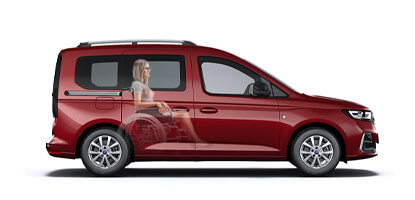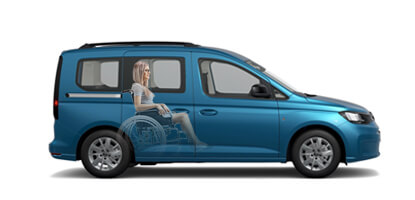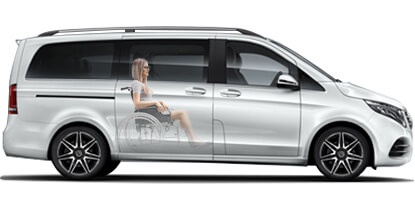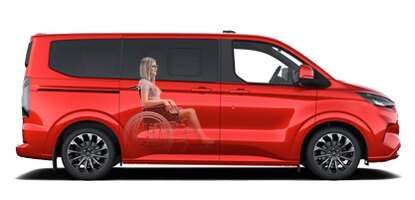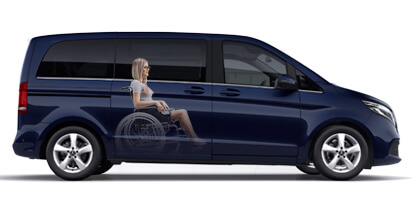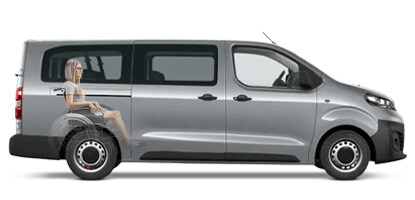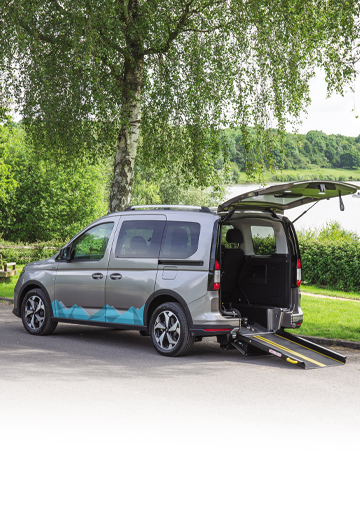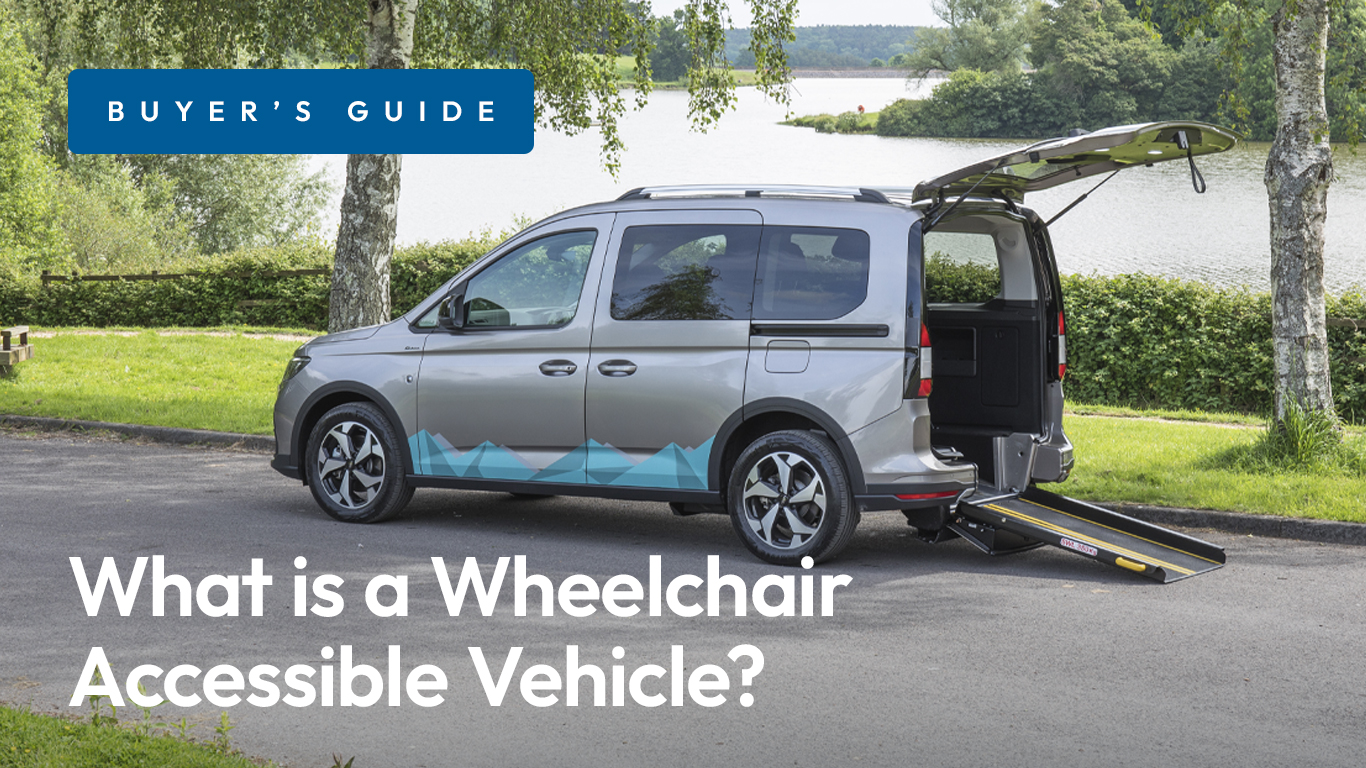Wheelchair Accessible Vehicles (WAVs) are permanently adapted cars which enable people with disabilities to travel in, or with, their wheelchair. WAVs typically feature access ramps, lowered floors to increase internal space, and safety-tested wheelchair restraint systems.
Types of Wheelchair Accessible Vehicle
The UK benefits from one of the world’s most developed markets for vehicle adaptations and Wheelchair Accessible Vehicles. There are many different types of Wheelchair Accessible Vehicle conversions, designed for the various needs of disabled people. These can be divided into Assisted Wheelchair Accessible Vehicles (AWAVs) and Unassisted Wheelchair Accessible Vehicles (UWAVs).
Assisted Wheelchair Accessible Vehicles (AWAVs)
Assisted Wheelchair Accessible Vehicles (or AWAVs for short) are vehicles designed for wheelchair users to travel with assistance – with family, or carers.
AWAVs are also known as Passenger WAVs, as the wheelchair user would typically travel as a passenger, while the vehicle is driven by another person.
Passenger WAVs
There are 3 main types of Passenger WAV, depending on where the wheelchair is located within the vehicle.
- Wheelchair user next to the driver (Up-Front Wheelchair)
- Wheelchair user next to the rear passengers (Central Wheelchair)
- Wheelchair user behind the rear passengers (Rear Wheelchair)
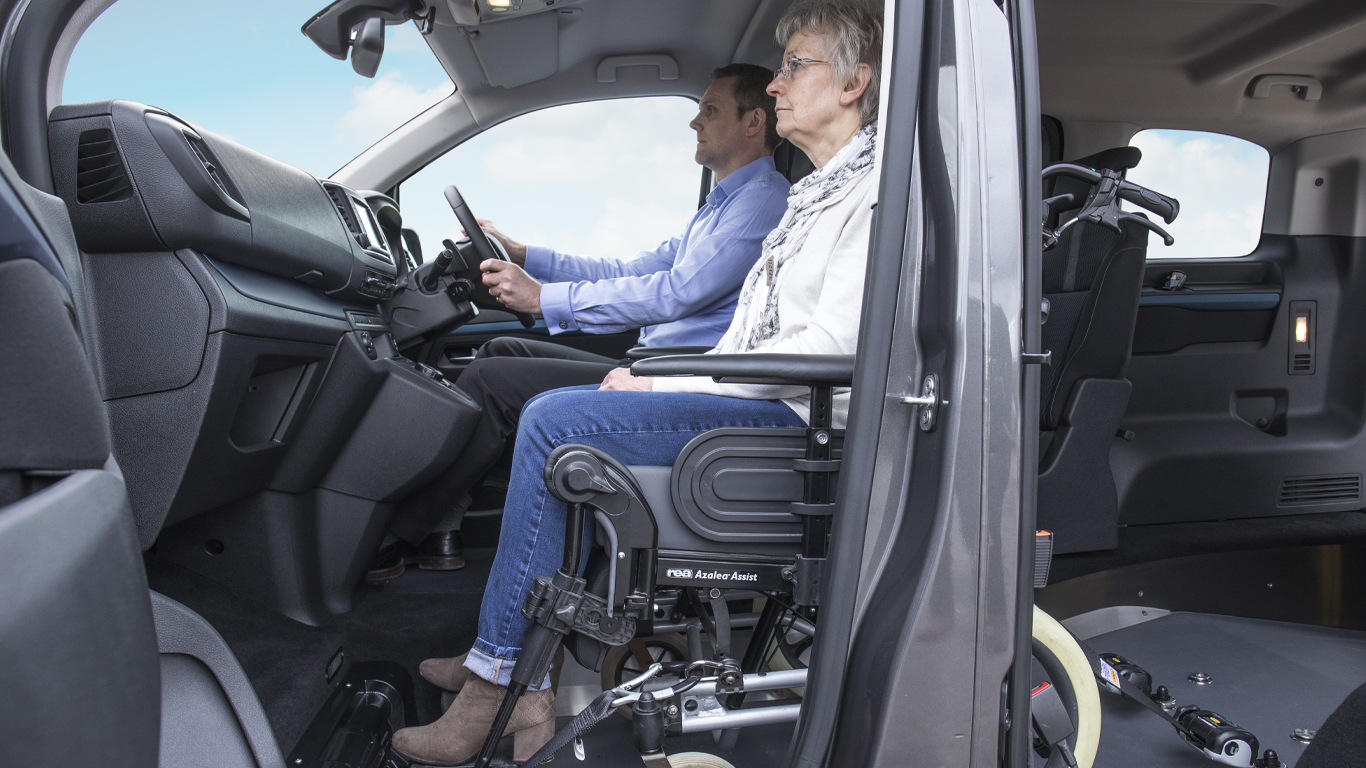
Up-Front Wheelchair WAVs
Up-front WAVs enable the wheelchair user to travel in the front row of the vehicle – usually where the front passenger seat would be. Access is typically via a rear ramp or lift, and the amount of headroom inside the vehicle will depend on whether the vehicle has a lowered floor.
Up-front WAV Advantages:
- Great visibility for the wheelchair user
- Socially inclusive for easy conversation with the driver
- Radio and heating controls within easy reach
Up-front WAV Disadvantages:
- You might have less passenger seats
- Less choice of vehicle makes & models
- Typically highest cost to convert

Central Wheelchair WAVs
A central wheelchair location (between the rear seats) is popular with families for inclusion, conversation or attendance on the move. It also tends to offer the most space and comfort for the wheelchair user.
Central WAV Advantages:
- Good visibility for the wheelchair user
- Socially inclusive for easy conversation with other passengers or medical intervention
- Smoother ride away from the vehicle suspension and axle
Central WAV Disadvantages:
- You might have less storage space
- You might have less seats than rear passenger WAVs
- Higher cost than rear passenger WAVs
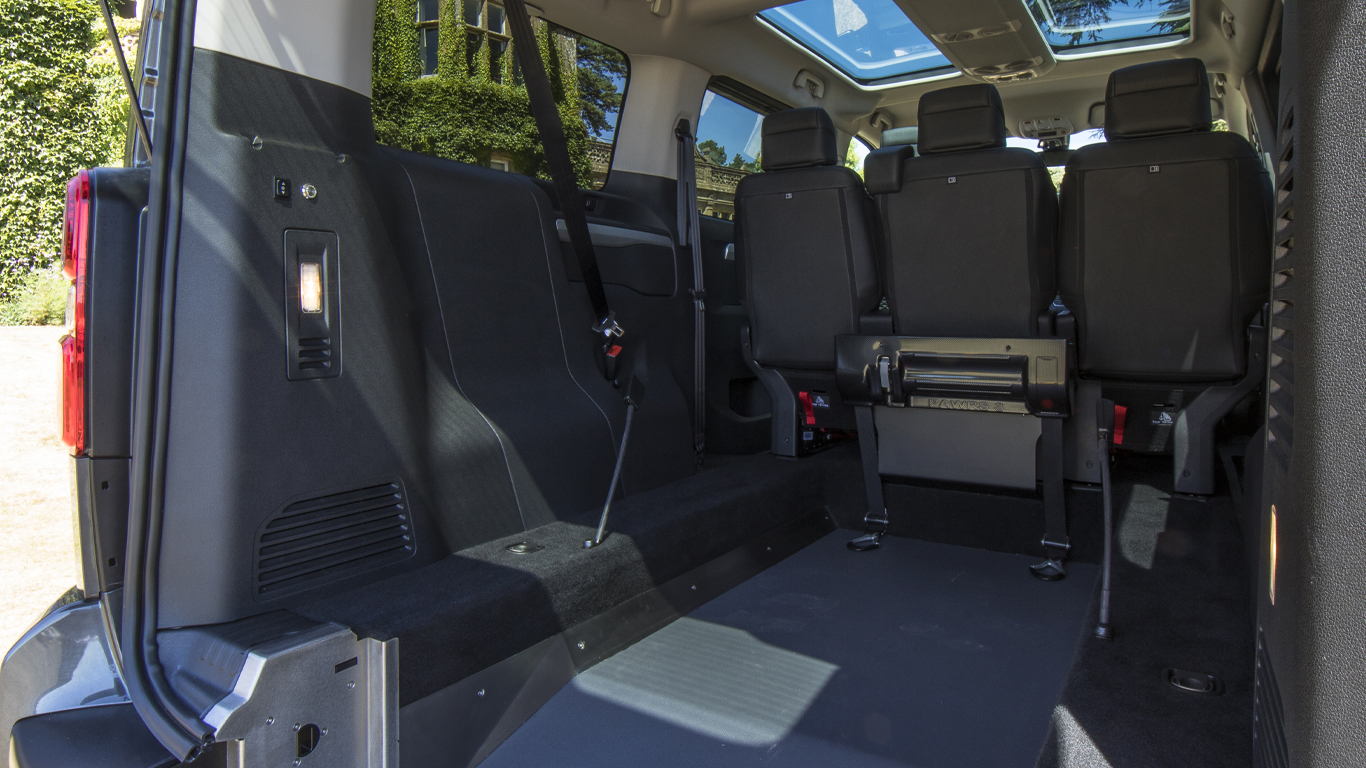
Rear Wheelchair WAVs
Travelling behind the rear seats is less ideal but might be right for you if the vehicle does not need to carry a wheelchair user very often – for example as a taxi or at a care home. A rear wheelchair location might also be adequate if you intend to transfer into a passenger seat, or are using the vehicle to carry a mobility scooter.
Rear WAV Advantages:
- May have more passenger seats when the wheelchair space is empty
- Suitable for transporting an empty wheelchair if the wheelchair user is ambulant
- Typically lowest cost WAV conversion
Rear WAV Disadvantages:
- Poor visibility for the wheelchair user
- Not inclusive – the wheelchair user may struggle to engage in conversation or get medical assistance
- Poor ride quality for the wheelchair user
Unassisted Wheelchair Accessible Vehicles (UWAVs)
Unssisted Wheelchair Accessible Vehicles (UWAVs) are vehicles designed for wheelchair users to travel independently.
There are 2 main types of UWAV: Drive from Wheelchair, and Internal Transfer.
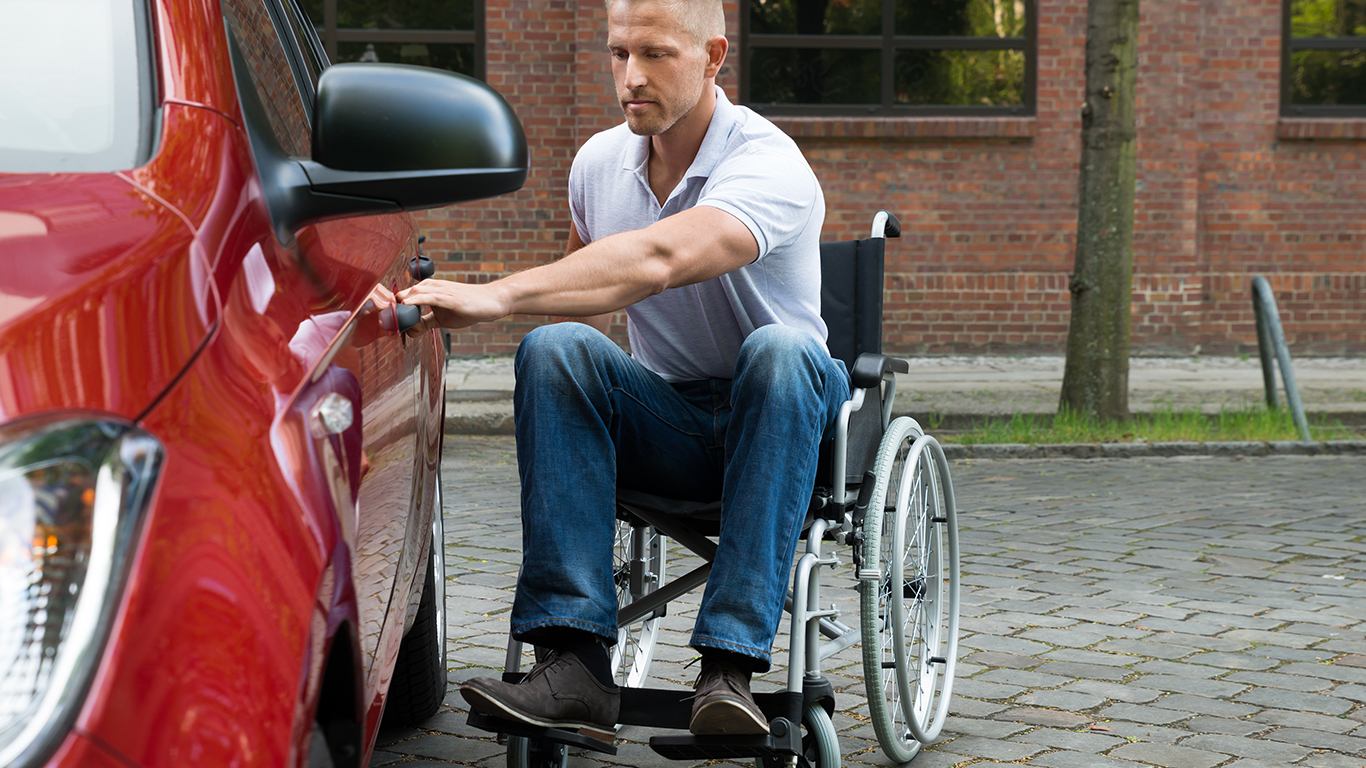
Drive from Wheelchair WAVs (DfW)
Drive-from Wheelchair WAVs are adapted for wheelchair users to drive the vehicle, whilst staying seated in their wheelchair. The driver’s seat will be replaced with a wheelchair space, and the vehicle typically feature a range of automations such as a powered lift or ramp, and a hands-free wheelchair tie-down system. Depending on the needs and abilities of the wheelchair user, the vehicle control systems may be replaced with adaptive systems for steering, braking and accelerating and changing gear.
Internal Transfer WAVs (IT)
Internal Transfer WAVs are similar to Drive from Wheelchair vehicles, however the wheelchair user transfers into a seat in the drivers’ position. This is sometimes achieved by replacing the driver seat with a rotating transfer seat, to help the wheelchair user lift themselves into the seat.
Internal Transfer WAVs are most commonly used by ambulant or semi- ambulant wheelchair users with more upper body strength, who are able to transfer themselves from their wheelchair.
Driving With a Disability
If you’re considering the possibility of driving with a disability, independent, impartial advice can be found at a Driving Mobility centre.
With 16 mobility and driving assessment centres across the UK, Driving Mobility offer support to people with a medical condition that may impact their drive, people with a disability who think they may need adaptations to a vehicle in order to be able to control it safely, and more.
Who can benefit from a WAV?
People with limited mobility, those unable to transfer into a standard car passenger seat, as well as their families, friends or carers, can all benefit from a Wheelchair Accessible Vehicle. WAVs are also useful for charities and community transport providers, as well as taxi operators who can help disabled people in their local communities by offering inclusive transport solutions.

